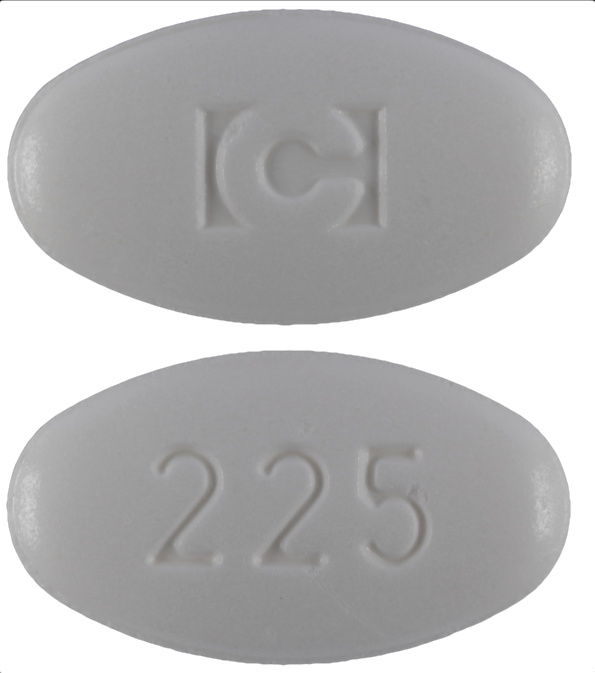Provigil and Nuvigil are medications prescribed as first-response treatments for excessive daytime sleepiness. Popular for sufferers of sleep disorders, sleep apnea or for those with shift work sleep disorder, Provigil and Nuvigil are distinguished from other types of medications that promote “wakefulness” by not being stimulants. With that in mind, they are still classified as schedule IV controlled substances under federal law and bring with them additional concerns regarding the potential for birth defects.
Prescription Name and Overview
Provigil is the product name for the drug modafinil, an oral tablet that promotes wakefulness. Nuvigil is the product name for the drug armodafinil – also an oral tablet prescribed for patients having issues with daytime wakefulness. Provigil is manufactured by Teva Pharmaceuticals USA, Inc. and Nuvigil by Cephalon, Inc. (now a subsidiary of Teva). It is not known how either medication works to keep a person awake. However, they are thought to work by affecting certain substances in the brain that control the sleep and wake cycle through dopamine manipulation. Studies show that this medication may increase the ability to stay awake compared to a placebo in people with narcolepsy, sleep apnea, or shift work sleep disorder. Provigil was first approved by the U.S. Food and Drug Administration (FDA) in 1998. Nuvigil followed with FDA approval in 2007.
Generic Name and Overview
Both Provigil and Nuvigil are available on the market with generic therapeutic equivalents marketed as modafinil and armodafinil.
OTC Name and Overview
Manufacturer
Teva Pharmaceuticals USA, Inc. (North Wales, Pennsylvania)
Labeled Indications
Provigil and Nuvigil are approved by the FDA for uses to remedy daytime sleepiness caused by:
- Narcolepsy
- Shift work sleep disorder
- Obstructive sleep apnea
Both Provigil and Nuvigil are sometimes also prescribed for what are called “off-label” uses which are not expressly approved by the FDA:
- Multiple sclerosis
- Attention deficit-hyperactivity disorder (ADHD)
- Depression
- Anxiety
- Weight loss
Active Ingredients
The primary active ingredient in Provigil is modafinil. The primary active ingredient in Nuvigil is admodafinil. Armodafinil is a “R-enantiomer of racemic modafinil”. In plain English, that means that Nuvigil differs slightly in its chemical composition from Provigil, but is otherwise similarly effective and requries fewer doses. It is thought that the primary active pathway for both drugs involves enhanced dopamine signaling in the brain. Note that neither drug is a stimulant and unlike Aderall and related stimulants, they do not appear to alter the range of dopamine or norepinephrine in the brains of patients.
What Is It Used For?
Both Provigil and Nuvigil are used for the treatment of narcolepsy, shift work sleep disorder, obstructive sleep apnea and to promote overall daytime wakefulness.
How Does it Work?
Provigil features the active ingredient modafinil and Nuvigil, the active ingredient armodafinil. Although it is not precisely understood how either drug achieves the results for which they are prescribed, it is widely thought that they do so by “dopamine signaling” or by suppressing other neurotrasmitters such as GABA.
What are the Approved Uses?
Both Provigil and Nuvigil are approved to treat narcolepsy, obstructive sleep apnea and shift work sleep disorder.
Production Anecdotes / History
Originally developed in the 1970s by a French professor in medical sciences, Michel Jouvet, Modafinil began as an experimental treatment for narcoplepsy in 1986. It wasn’t until 1998 that American drug manufacturer Cephalon gained approval from the FDA to market Provigil in the United States. What then followed were years of convoluted patent lawsuits between Cephalon and other drug manufacturers, among which, notably, was Teva Pharmaceuticals USA, which sought to market generic alternatives to modafinil in the early 2000s. Anticipating issues with its patent for modafinil, Cephalon moved to patent a similarly effective, but chemically distinguishable alternate medication – armodafinil. Eventually, and following years of settlement negotiations over the disputed rights to manufacture generic alternatives, Cephalon was acquired/merged into Teva Pharmaceuticals USA. Approval of the acquisition by the FTC was conditioned upon Cephalon’s granting the rights to a generic production of modafinil to Par Pharmaceutical.
Comparisons of Nuvigil to Provigil
| Nuvigil | Provigil | |
| Generic Name | armodafinil | modafinil |
| Generic Equivalent | Yes | Yes |
| Uses | Improve wakefulness in people with narcolepsy, obstructive sleep apnea and Shift Work Sleep Disorder | Improve wakefulness in people with narcolepsy, obstructive sleep apnea and Shift Work Sleep Disorder |
| Form | Tablet/Ingested Orally | Tablet/Ingested Orally |
| Dosages | 50mg; 150mg; 200mg; 250mg | 100mg; 200mg |
| Drug Half-Life | ~15 hours | ~15 hours |
| Treatment Length | Long-Term | Long-Term |
| Storage | At room temperature between 68-77 degrees Fahrenheit | At room temperature between 68-77 degrees Fahrenheit |
| Controlled Substance | Yes | Yes |
| Withdrawal Risk | No | No |
| Potential for Misuse | Yes | Yes |
Precautions
- Modafinil and armodafinil should not be used as a sleep substitute.
- These medications may cause allergic reactions such as: anaphylaxis, angioderma or skin conditions such as Stevens-Johnson syndrome.
- Either medication may cause allegic reactions that involve multiple organs such as the liver or kidneys.
- Hormonal birth control pills, implants, patches, implants, shots, vaginal rings or intrauterine devices (IUDs) may not function as well while using modafinil or armodafinil.
- These drugs may cause agitation, irritability, or displays or other abnormal behaviors.
Long-Term Use Considerations
Modafinil and Armodafinil are regulated in the United States as class IV controlled substances. This means that the drugs have a low possibility of becoming an addictive substance. However low that chance, there is still the possibility for addiction to become an issue.
Drug Interactions
Possible Drug Interactivity
- Abilify
- Adderall
- Clonazepam
- Hydrocodone
- Klonopin
- Omeprazole
- Percocet
- Ritalin
- Suboxone
- Trazadone
- Vyvanse
- Xanax
Possible Disease Interactions
- Alcoholism
- Cardiovascular Dysfunction
- Liver Dysfunction
- Psychiatric Complications
- Bipolar Disorders
- Psychotic Disorders
Long-Term Side Effects
The following is a list of possible side effects which if experienced, require the patient to consult their medical professional:
- Blistering, burning, crusting, dryness or flaking of the skin
- Burning, crawling or “pins and needles” feelings in the skin
- Difficult or labored breathing
- Fast, irregular, pounding or racing heartbeat or pulse
- Fever
- Headache, severe and throbbing
- Increased volume of urine
- Rash
- Shakiness in the legs, arms, hands or feet
- Tightness in the chest
- Trembling
- Trouble breathing
Other Common Side Effects and FDA Warnings (History Of)
Stevens Johnson Syndrome, Hypersensitivity Reactions and Psychiatric Symptoms
In 2007, the FDA required the manufacturer of Provigil and Nuvigil to revise labeling on the medications to include safety information and warnings concerning serious rash reactions, including those connected with Stevens-Johnson Syndrome (SJS). SJS is a rare skin disorder that starts out with flu-like symptoms and progresses to an extremely painful red/purple rash and blisters. SJS manifests on the skin and in the body’s mucuous membranes and can involve blisters in the mouth, nose, eyes and genitals. SJS suffers require immediate medical attention, hospitalization and recovery can require several very painful weeks or even months. The revised labeling also extends to advise of rare cases of serious or life-threatening rashes including Toxic Epidermal Necrolysis (TEN) and Drug Rash with Eosinophilia. In addition to the warnings concerning SJS, TEN and Drug Rash, labeling for these drugs was revised to include references to multi-organ hypersensitivity and adverse psychiatric experiences such as: anxiety, mania, hallucinations and suicidial ideation.
Association with Birth Defects
The FDA classifies admodafinil and modafinil as a “Category C” drug which signals that the agency is concerned about the use of these drugs during pregnancy, but does not have enough evidence to suggest that they represent a clear safety hazard in this respect. However, in 2009, the FDA was concerned enough to establish a formal “pregnancy registry” for modafinil and armodafinil to gather further information and study the effects of both drugs on pregnancy and fetal development. The registry tracks pregnant women exposed to at least one dose of either medication at least six weeks prior to conception and/or during pregnancy.
According to some reports, the rate of congenital malformations in babies connected with exposure to modafinil and armodafinil by the mother during pregnancy is as high as 15%. The types of birth defects believed to have been caused by the drugs include:
- Congenital heart defects
- Cleft lip
- Spina bifida
- Cleft palate
- Microcephaly
- Miscarriages
- Fetal growth problems
- Fetal deaths
- Hypospadias
- Neural tube defects
- Atrial septal defects
- Ventricular septal defects
- Ebstein anomaly
- Transposition of the great arteries
- Pulmonary atresia
- Tricuspid atresia
- Total anomalous pulmonary venous return
- Tetralogy of Fallot
- Single ventricle
- Hypoplastic left heart syndrome
- Coarctation of the aorta
- Atrioventricular septal defects
- Double-outlet right ventricle
- Interrupted aortic arch
- Truncus arteriosus
It should be noted that in 2019, both Teva Pharmaceuticals Ireland and Health Canada issued pregnancy and birth defect warnings concerning armodafinil and modafinil. Both Teva Pharmaceuticals Ireland and Health Canada urge healthcare healthcare providers not to prescribe this medication to women who are pregnant or plan to become pregnant.

Lawsuits
At the moment, there are no class-action lawsuits or multi-district litigation (MDL) involving claims related to harm or birth-defects alleged to have been caused by use of modafinil or armodafinil. However, attorneys across the United States are accepting cases and conducting their own preliminary investigations prior to filing individual lawsuits on behalf of plaintiffs claiming injury or loss. It shiould be noted that in September 2019, Teva Pharmaceuticals, Mylan Pharmaceuticals and Sun Pharmaceuticals all agreed to pay consumers $65,877,600 and the California Attorney General $69,000,000 to settle a class action alleging violation of anti-trust laws by manufacturers to keep a generic version of modafinil from coming to the market sooner.
Sources Cited (15)
1. “Mechanisms of Modafinil: A Review of Current Research” https://www.ncbi.nlm.nih.gov/pmc/articles/PMC2654794/
2. “Cephalon Gets Six Month Pro-Vigil Patent Extension” https://www.bizjournals.com/philadelphia/stories/2006/03/27/daily13.html
3. “Par Pharmaceutical Acquires Three Generic Products from Teva Pharmaceuticals” https://www.prnewswire.com/news-releases/par-pharmaceutical-acquires-three-generic-products-from-teva-pharmaceuticals-132044783.html
4. “Nuvigil vs. Provigil: How Are They Similar and Different?” https://www.healthline.com/health/narcolepsy/nuvigil-vs-provigil
5. “Mayo Clinic: Armodafinil-Oral Route” https://www.mayoclinic.org/drugs-supplements/armodafinil-oral-route/precautions/drg-20071125?p=1
6. “The Long-Term Tolerability and Efficacy of Armodafinil in Patients with Excessive Sleepiness Associated with Treated Obstructive Sleep Apnea, Shift Work Disorder, or Narcolepsy: An Open-Label Extension Study” https://www.ncbi.nlm.nih.gov/pmc/articles/PMC2952749/
7. “Armodafinil Addition and Abuse” https://www.therecoveryvillage.com/armodafinil-addiction/#gref
8. “Provigil Birth Defects” https://www.birthinjuryguide.org/birth-injury/causes/medication/provigil-birth-defects/
9. “Mayo Clinic: Stevens-Johnson Syndrome” https://www.mayoclinic.org/diseases-conditions/stevens-johnson-syndrome/symptoms-causes/syc-20355936
10. “Armodafinil While Pregnant: What You Need to Know” https://www.therecoveryvillage.com/armodafinil-addiction/armodafinil-while-pregnant/#gref
11. “Health Canada Warns that Modafinil May Cause Fetal Harm” https://aasm.org/health-canada-warns-modafinil-fetal-harm/
12. “FDA Pregnancy Categories” https://chemm.nlm.nih.gov/pregnancycategories.htm
13. “Modafinil” https://medlineplus.gov/druginfo/meds/a602016.html
14. “Practical Use and Risk of Modafinil, a Novel Waking Drug” https://www.ncbi.nlm.nih.gov/pmc/articles/PMC3286657/
15. “Modafinil: Potential Risk of Congenital Malformations When Administered During Pregnancy” http://www.hpra.ie/docs/default-source/default-document-library/important-safety-information—modafinil99170c2697826eee9b55ff00008c97d0.pdf


